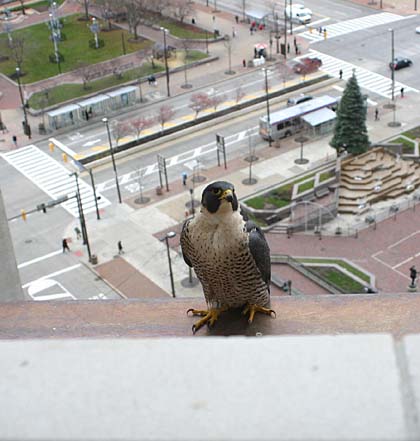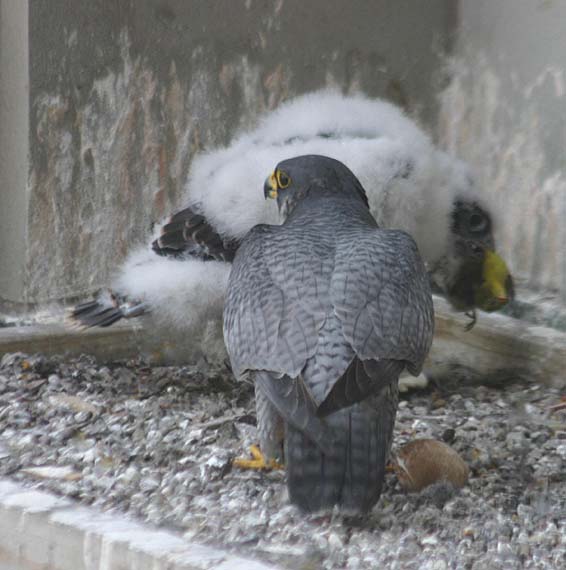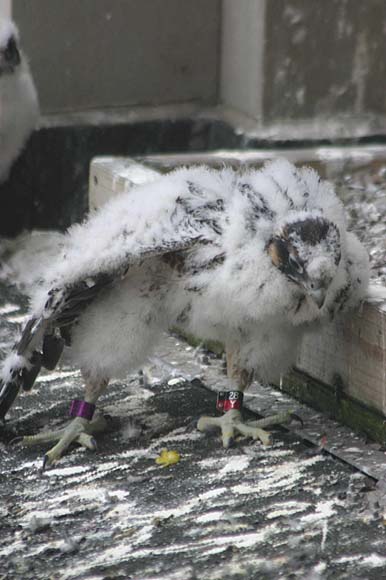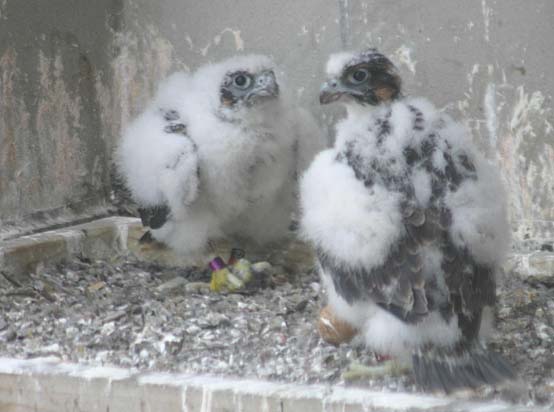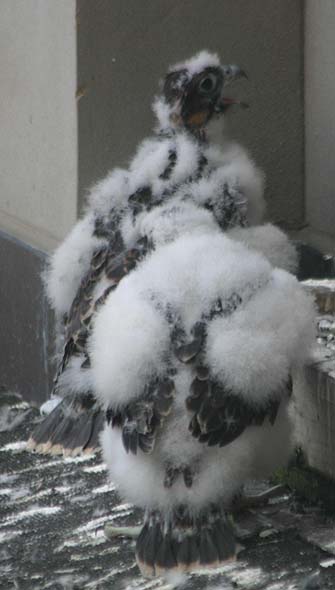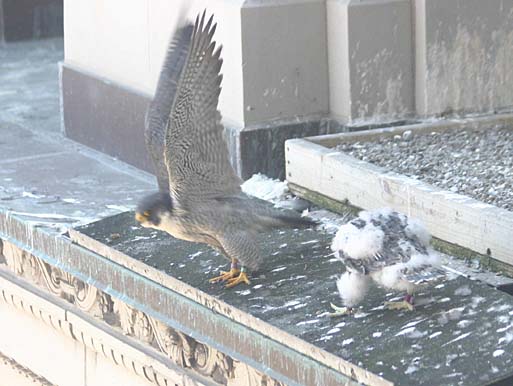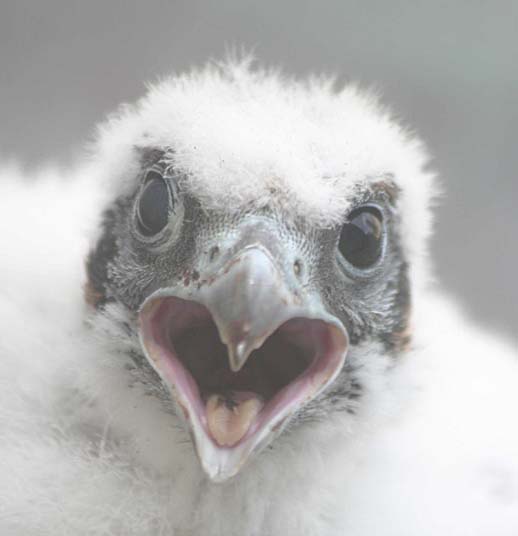FALCON FLASH
Dateline: Cleveland, Ohio
May 23, 2013
Watch the falcons live at: http://www.falconcam-cmnh.org/news.php
Our thanks to the Cleveland Museum of Natural History for sponsoring the FalconCams.
Photos are courtesy of Scott Wright, volunteer peregrine nest monitor. They may be used in any non-commercial publication, electronic or print, but please give photo credit.
Ginger and Tess are one month old and changing very fast. Here is Ginger with Boomer. Remember, female peregrines are larger than males, and you can see Boomer’s “little girl” is huge!
Volunteer nest monitor, Mr. Scott Wright, visited the nest recently and saw both youngsters out walking on the skyscraper’s ledge. Here is Tess out for a walk.
If you have been studying the FalconCam archives the last few days, you have noticed they are out of the nest for much of the day. “Ledge-walking” scares some falcon fans, because the falcons' nestbox is 13 stories up on their skyscraper and the ledge is narrow - but don't worry, they won't fall off. Falcons are cliff-dwellers and are adapted to high places. Here is a view from the skyscraper ledge.
The most striking aspect at this stage of development is the loss of down. It seems Tess is a little ahead of Ginger in the process, so perhaps she was the first to hatch.
The youngsters are growing very fast and require LOTS of food. The Canadian Peregrine Foundation tells us: “A study conducted at Cornell University demonstrated that females are more efficient hunters, because they can catch larger prey species, and therefore need to make fewer hunting expeditions, and as a result conserves energy. However, during incubation and while the chicks are young, the female spends most of her time at the nest, and does little hunting. The male therefore ends up providing most of the food during this time. The result of this is that when the chicks are young, they are fed small birds such as sparrows and starlings, whereas when they are older and need more food, the female begins to hunt again and brings larger prey such as pigeons and ducks.
Peregrines, as well as many other predatory species, can eat large quantities of food in one sitting, which is to their advantage because they never know when they will get their next meal. Peregrines can, in one sitting, eat a meal weighing as much as one quarter of their own weight. Additional food is usually stored in caches to be returned to at a later time when fresh food is scarce. A typical Peregrine family (2 adults and 3 young) eats roughly 225 kilograms (500 pounds) of food per year.”
Mr. Wright reports: "Among the young falcons, competition for food can be just like with any children, with pushing and shoving to get to the parent with food. I have seen one young falcon take the food right out of another's beak if they did not get it down fast enough, or the piece of food placed into the open beak was too big for the chick to eat”.
In this picture Boomer decided to get away from his large youngster who is constantly screaming at him for food.
A falcon fan who observes the nest from his nearby office reports: “Interesting to watch Boom and SW today. They were taking turns taking off from the ledges near the nest box and flying in short circles around the area (no more than 3-4 seconds in the air) and landing back near the nest. They must have done it at least nine or ten times. Every time they landed, they'd look back towards the nest, where the kids were. It seemed to me that they were almost trying to show the kids how it was done.”
Here is Ginger. Is she thinking about flying?
Click here to read what happened earlier
Click here to read what happened next

